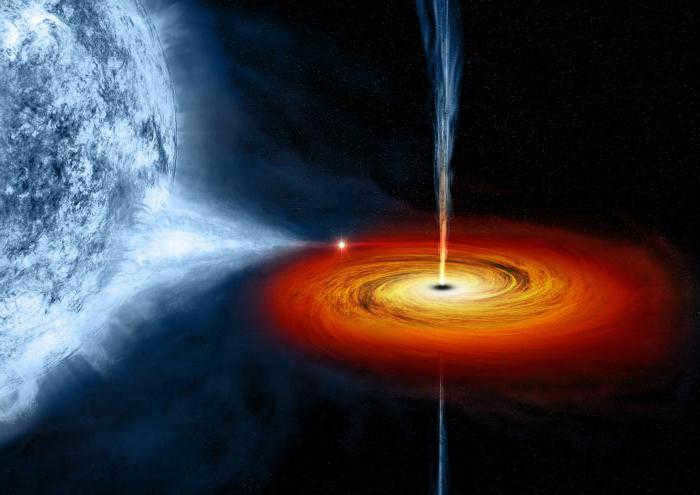
During this lesson, we will explore the concept of galaxies and familiarize ourselves with Edwin Hubble’s classification system, which identifies the main types of galaxies. Additionally, we will examine Hubble’s law and discover methods for estimating distances to faraway galaxies.
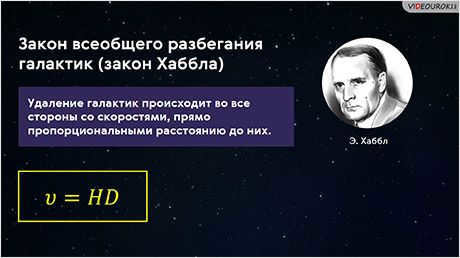
Currently, it is not possible to view or share the video tutorial with students
In order to access this and other video tutorials in the package, you will need to add it to your personal account.
Unlock amazing possibilities


Outline for the lesson “Galaxies in Other Star Systems”
In our star system, there are approximately 200-400 billion stars and bright nebulae. However, the Galaxy is not limited to just a faintly visible nebular spot in the constellation Andromeda, which resembles the shape of a candle flame. It was in 1924 when Edwin Hubble, utilizing the largest telescope available at that time, made a groundbreaking discovery. He revealed that the Andromeda Nebula is actually situated more than two million light-years away and is a vast system comprised of an immense number of stars.
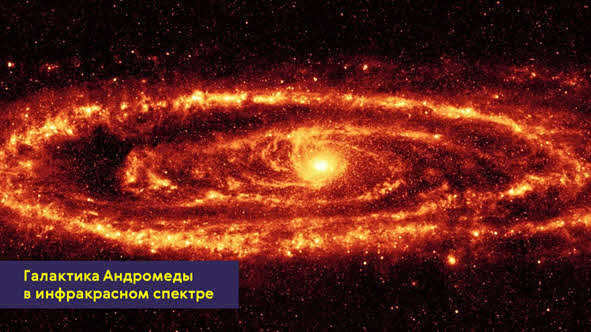
Further investigation of other nebulae that were recognized during that time revealed that they were also immense star systems situated at a great distance. As a result, new entities in the cosmos – galaxies – were uncovered.
At present, galaxies are vast collections of stars and interstellar matter that are held together by gravity and are positioned beyond our own galaxy.
Interestingly, in the early 1990s, astronomers were only aware of around 30 galaxies. However, following the launch of the Hubble Space Telescope and the operation of 10-meter ground-based telescopes, the number of known galaxies soared dramatically. Although the precise number of galaxies in the cosmos remains unknown, it is highly likely that they number in the trillions.
The size of the majority of observed galaxies varies between 5 and 250 kiloparsecs in diameter. However, there are exceptional supergiants like the IC 1101 galaxy, which exceeds 600 kiloparsecs in size. As of 2017, it held the title of the largest known galaxy.
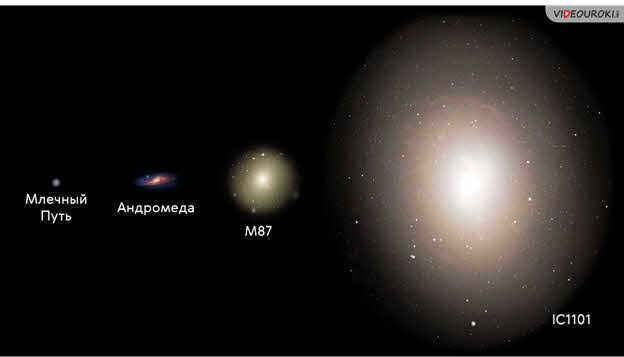
When we examine pictures of far-off galaxies, it becomes evident that they exhibit a remarkable range of diversity.
Edwin Hubble put forth a system for categorizing galaxies based on their visual characteristics back in 1936. According to this scheme, there are four primary types of galaxies: elliptical galaxies (designated as type E), lenticular galaxies (type S0), spiral galaxies (type S), and irregular galaxies (Irr).
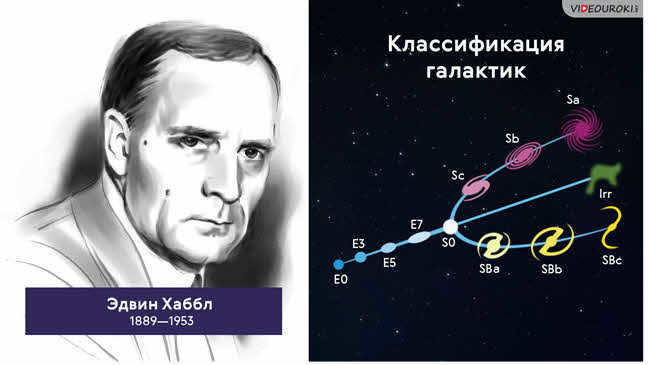
Spherical or elliptical structures define elliptical galaxies. The central region of these galaxies contains the highest concentration of stars, which gradually decreases towards the outer edges. Yellow and red stars dominate in elliptical galaxies, while gas, dust, and young, bright stars are scarce.
When it comes to their appearance, elliptical galaxies primarily vary in terms of their compression. To address this, Hubble suggested appending a numerical value ranging from zero to seven to the letter designation of each galaxy, which represents the eccentricity of the ellipse. For instance, E0 galaxies are nearly spherical in shape, while E7 galaxies are significantly elongated. However, it is important to note that these numbers indicate the projection of the galaxy on the celestial sphere, rather than its actual shape.
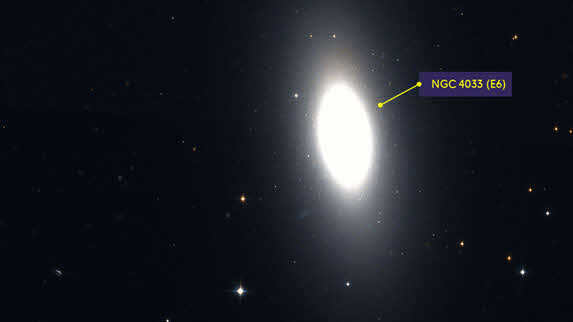
Spiral galaxies are a dominant type of galaxies, comprising approximately 55% of all galaxies that have been investigated. They exhibit a distinct flattened shape, with a central region known as the bulge housing the galactic nucleus, as well as a prominent spiral structure. Surrounding the disk of a spiral galaxy is a substantial spherical halo, which primarily consists of aging stars that are concentrated in globular clusters.
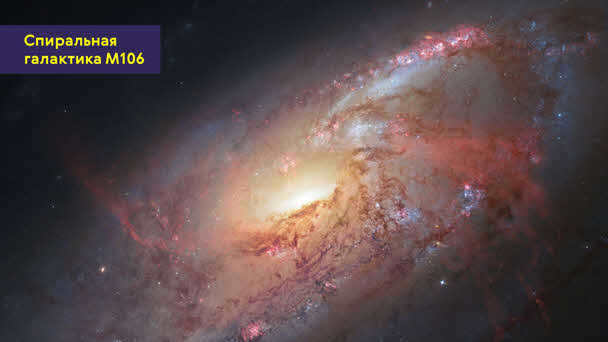
The spiral arms, on the contrary, are areas where stars are actively forming and are primarily composed of young, hot stars.
Depending on the density of a galaxy’s arms, lowercase Latin letters from a to d are added to its classification.
Approximately two-thirds of spiral galaxies contain a nearly straight stellar bar in their central region. This bar, which consists mainly of bright stars, traverses the galaxy’s center. As a result, these galaxies are referred to as spiral galaxies with a bar.
In such galaxies, the spiral arms begin at the ends of the bar, whereas in typical spiral galaxies, they originate directly from the nucleus.
Edwin Hubble categorized galaxies such as SB based on the level of tightness in their spiral arms, dividing them into three subcategories.
It can be inferred that our own Galaxy is a spiral galaxy with a junction.
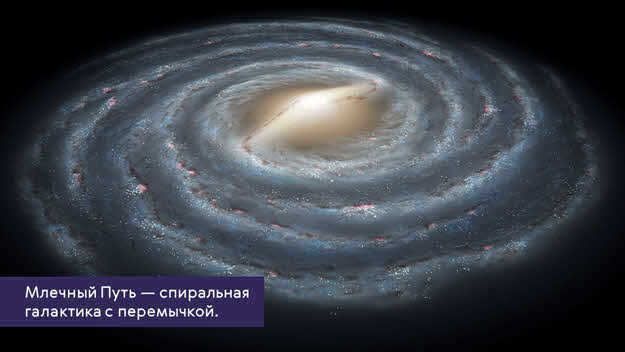
Lenticular galaxies, also known as lens-shaped galaxies, are an intermediate type of galaxy between spiral and elliptical galaxies. Their appearance is similar to that of elliptical galaxies when viewed flat, but they have a flattened stellar disk. Structurally, they resemble spiral galaxies, but they lack a pronounced flat component and have weakly developed spiral arms. This results in a lower rate of star formation within them. Consequently, lenticular galaxies are predominantly composed of ancient stars.
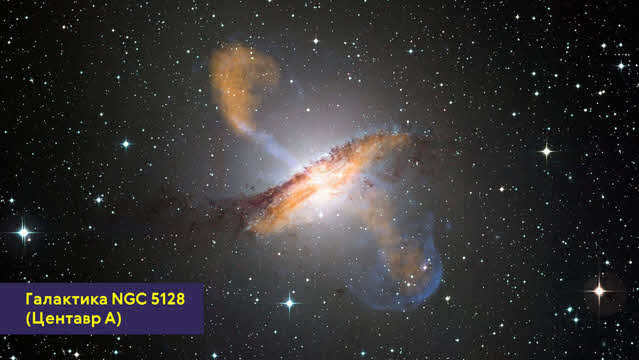
The final category of galaxies is represented by irregular galaxies. These galaxies are characterized by their small mass and irregular structure. Typically, irregular galaxies have a disorganized shape with no distinct nucleus or spiral arms. However, they contain a significant amount of interstellar gas, comprising up to 50% of the galaxy’s mass. As a result, irregular galaxies are known for hosting numerous young, luminous stars and regions of ionized hydrogen.
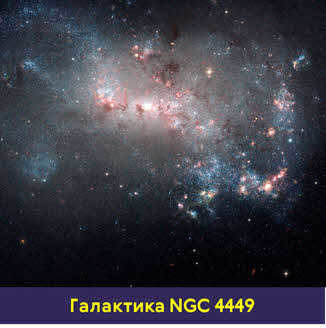
The distances to the closest galaxies are calculated by evaluating the observed brightness of the Cepheid stars:

However, this technique is not appropriate for the majority of remote galaxies. Nonetheless, in the years 1912-1914, Vesto Slifer, an American astronomer, observed that the lines in the spectra of remote galaxies were shifted towards the red end of the spectrum from their normal position. According to the Doppler effect, this indicated that the distance between an observer on Earth and the galaxies was increasing.
Subsequently, Edwin Hubble determined the distances and velocities of certain galaxies. The observations revealed that the further a galaxy was, the faster it was moving away. There exists a straightforward linear relationship between these variables, which has become known as Hubble’s law.
In the written equation H – represents the Hubble constant. It indicates the rate at which the speed of galaxies increases as the distance to them increases by one megaparsec (1 Mpc).
The Hubble constant is not truly constant, as it varies over time. However, the term “constant” is used because at any specific moment in time, the Hubble constant remains the same throughout the universe. As of 2016, it is estimated to be approximately 66.93 ± 0.62 (km/s)/Mpc.
Hubble’s law has allowed for the determination of the distance to the farthest objects in the Universe.
It is fascinating that, as a result of this legislation, a new variety of ultra-compact dwarf galaxies was uncovered by Stephen Phillips from the University of Bristol in 1999. These galaxies are characterized by their compactness and exceptionally dense concentration of stars. In the past, they were often disregarded since they appear similar to individual stars within our Galaxy when observed using a conventional telescope.
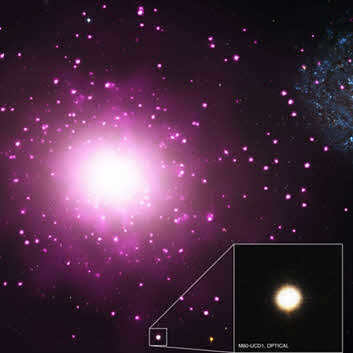
Clusters of galaxies are commonly classified into regular and irregular clusters.
Regular clusters resemble globular clusters of stars, exhibiting spherical symmetry and a high concentration of galaxies towards the center. An example of this type of cluster can be found in the constellation Veronica’s Hair and contains tens of thousands of galaxies.
In 1933, Fritz Zwicky, an astronomer from the United States, conducted an analysis of 8 galaxies within this cluster and determined that in order for the cluster to maintain stability, its total mass must be several times greater than the combined mass of its individual stars. Additionally, research on the Andromeda galaxy revealed that the rotation of stars around its center does not decrease as expected according to celestial mechanics, but instead remains relatively constant.
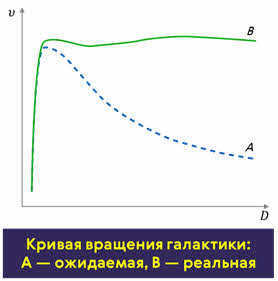
This could imply that the galaxy contains a significant amount of hidden matter throughout its entirety, known as dark matter.
It has been discovered that neither gas, nor faintly luminous stars, nor other objects composed of ordinary matter (such as protons, neutrons, and electrons) are suitable candidates for dark matter. It is possible that dark matter is made up of elementary particles similar to neutrinos that have weak interactions with ordinary matter.
At times, the density of galaxies in clusters is so high that they can interact with one another due to gravitational forces. These galaxies are referred to as interacting galaxies. The gravitational interaction between them leads to significant changes in their shape.
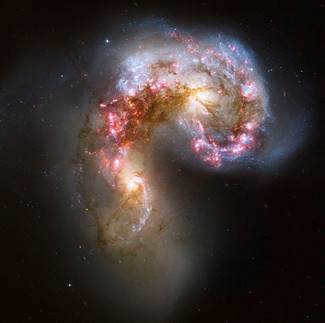
Even the Milky Way is an interacting spiral galaxy. Currently, it is engulfing a dwarf galaxy on the opposite side of the galactic disk from our perspective. In several billion years, it will consume the Magellanic Clouds, and in approximately 4 billion years, it will collide with the Andromeda galaxy. This collision will eventually lead to the merging of the two galaxies, forming a colossal star system within 1-2 billion years.
Active galaxies are characterized by a bright central part known as the nucleus, which exhibits high stellar density and brightness. Unlike ordinary stars, the energy released in the nuclei of some galaxies cannot be explained by radiation or explosions. These extraordinary galaxies are referred to as active galaxies. Their activity is diverse, ranging from intense radiation in the short-wavelength regions of the spectrum to the emission of powerful gas jets.
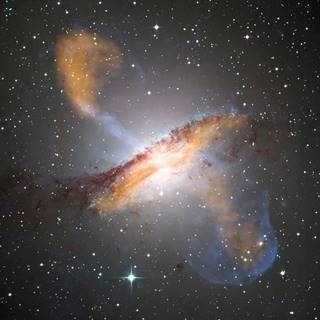
In 1960, while conducting a radio survey of the sky, Allan Sandage and Thomas Matthews stumbled upon an entity that bore a striking resemblance to active galactic nuclei. However, in the night sky, it appeared to be an ordinary star with a magnitude of 13. Upon studying the object’s spectrum, they discovered the presence of vibrant emission lines, similar to those found in gas nebulae, but with a significant redshift. This redshift resembled the spectra of distant galaxies. Thus, the discovery of quasars was made – a class of astronomical objects that rank among the brightest in the visible Universe. The radiation emitted by quasars is tens, and sometimes hundreds, of times more powerful than the combined energy of all the stars in galaxies like our own.
The exact nature of quasars’ radio emission activity remains uncertain. One theory suggests that they are galaxies in the early stages of formation, with the radiation originating from the accretion disk of a supermassive black hole situated at the galaxy’s core.
VI. Structure and evolution of the Universe
§ 26 Other star systems – galaxies
Supplementary resources for the lesson
In the XIX century, Messier compiled a catalog of the brightest galaxies, at a time when their nature was completely unknown. As a result, the Andromeda Nebula was designated M31 in this catalog. In the “New General Catalog” (New General Catalog), which contains information about objects in distant space, including over 13 thousand galaxies, it is listed as NGC 224. All galaxies consist of stars, interstellar gas, and dark matter, although their relative composition varies among different types of galaxies. Determining the distance from observations of Cepheids is not possible for most galaxies. In such cases, other methods are utilized, with the most reliable being the determination of distance through the redshift law discovered in 1929 by American astronomer Edwin Hubble (1889 – 1953). Hubble found that the lines in the spectra of all galaxies (except for the Andromeda Nebula and other nearby galaxies) were shifted towards the red end (Figure 6.12). This “red shift” indicated that they were moving away from our Galaxy.
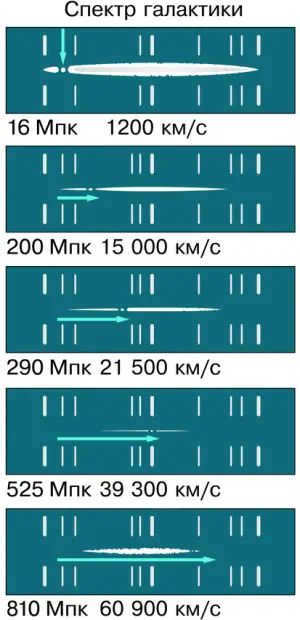
When the scientist compared the distance to the galaxies with their escape velocities, they discovered a simple relationship between these quantities known as Hubble’s law: υ = HR.
In this equation, υ represents the velocity of the galaxy, R represents the distance to the galaxy, and H is a coefficient of proportionality now referred to as the Hubble constant. According to current data, the value of H is 69 km/(s – Mpc).

This legislation has enabled astronomers to accurately measure the distance to the farthest objects in the Universe, even when other methods are not suitable. By analyzing the displacement of spectral lines in a galaxy’s spectrum, scientists can determine its velocity and then use a formula to calculate its distance.
Over the years, astronomers have measured the redshifts of numerous galaxies and determined the distances to millions of them. The light from the most remote galaxies has been traveling for approximately 13 billion years.
Galaxies exhibit a wide range of appearances and structures, but many of them can be categorized according to the simple and elegant classification system proposed by Hubble in 1923 (Fig. 6.13).
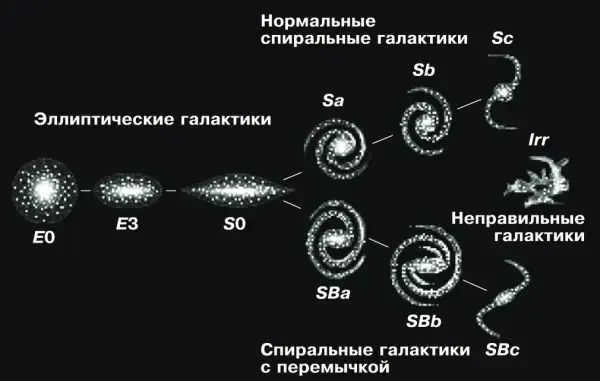
All galaxies were classified into three categories: elliptical – E, spiral – S, and irregular – I. The morphology of elliptical galaxies ranges from nearly spherical to highly flattened. Spiral galaxies can be further divided into two subtypes: regular spirals, where the spiral arms originate directly from the central region, and barred spirals, where the arms are connected to a bar-like structure that passes through the center of the galaxy.
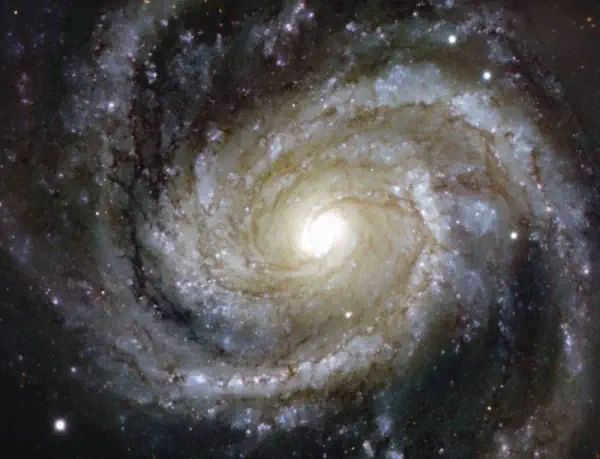
The Large and Small Magellanic Clouds, which were named the closest and brightest galaxies of irregular type, can be seen in Figure 6.14.
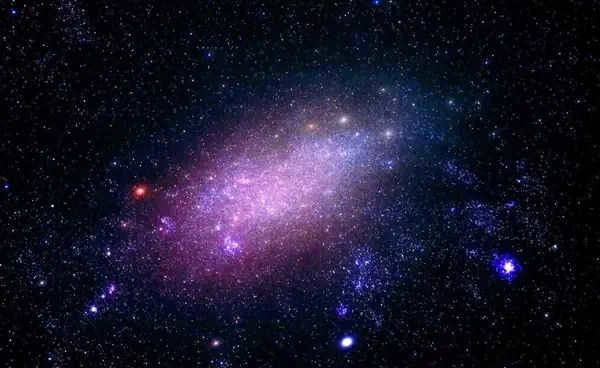
The Magellanic Clouds can be easily observed in the Southern Hemisphere near the Milky Way with the naked eye. These clouds are satellites of our Galaxy, with the Large Cloud being approximately 200 thousand light-years away and the Small Cloud about 170 thousand light-years away. Irregular galaxies make up a relatively small proportion, accounting for only 5% of all known galaxies. These galaxies have a significant amount of gas, making up to half of their visible mass.
However, it has been discovered that determining the precise mass of galaxies is nearly unattainable. Research has revealed that nearly every galaxy, including our own, possesses extensive coronae of dark matter, commonly referred to as hidden mass or dark matter. Calculations indicate that the mass of dark matter is several times greater than the combined mass of all observable galactic entities. Furthermore, it has been revealed that there is heated gas present between galaxies within their clusters, reaching temperatures exceeding 10 million K. The total mass of this gas is equivalent to the cumulative mass of all galaxies within the cluster. The gravitational forces exerted by galaxies can only sustain such a substantial amount of extremely hot gas if dark matter is also present within the cluster.
It has been discovered that ordinary matter, such as gas, faintly luminous stars, and other objects made up of protons, neutrons, and electrons, are not suitable candidates for dark matter. It is possible that dark matter consists of elementary particles like neutrinos, which have weak interactions with ordinary matter.
Spiral galaxies, like our own, are the most prevalent type of galaxy, accounting for approximately half of all observed galaxies. These galaxies are characterized by the presence of two or more spiral arms, which contain numerous young and bright stars, luminous gas nebulae, and cold gas-dust clouds. It is within these spiral arms that stars are born from interstellar matter.
Based on contemporary theories, spiral arms can be described as regions of increased density of stars and gas that revolve around the center of a galaxy as a cohesive structure. The angular velocity remains constant, while the linear velocity increases as one moves further away from the axis of rotation. These arms do not possess a uniform composition of stars and gas; they periodically intersect with the arm region. When passing through these intersections, the compression wave has a significant impact on the gas, causing its density to multiply and initiating the process of star formation. The concentration of neutral hydrogen along the spiral arms is supported by radio astronomy data. Remarkably, in the same galaxy (M51), observations in the radio spectrum reveal that the spiral arms extend much farther from the galaxy’s center compared to what is seen in the optical range (Fig. 6.15).
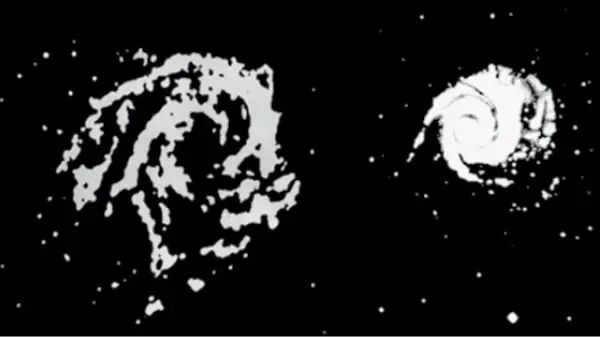
The lentil or disk shape of the spiral galaxies that we observe from a side view is similar to a thickening in the middle, resembling a bulge (as shown in Figure 6.16). The bulge is the central, densest part of the halo and is often referred to as a “balge” (a synonym for “thickening” in English). It seems that our own Galaxy has a similar structure.
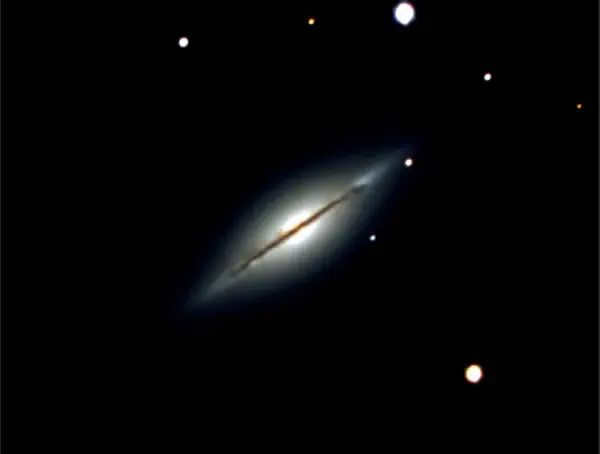
Elliptical galaxies (Fig. 6.17) make up about 25% of all galaxies and are the second most common type. Unlike spiral galaxies, they lack a disk and spiral arms, instead having a spherical component. This component is primarily composed of old red stars and lacks significant amounts of cold gas. It is believed that all the interstellar matter in these galaxies was used in the formation of these stars.
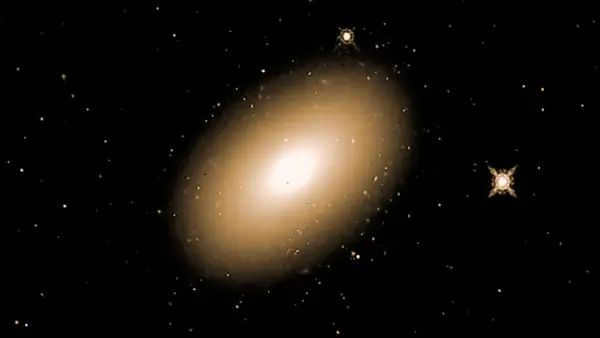
Lenticular galaxies, also known as type 50 galaxies, share similarities with spiral galaxies as they possess both a disk and a halo. However, unlike spiral galaxies, lenticular galaxies lack spiral branches. Approximately 20% of all galaxies fall into this category.
Galaxies of the same classification exhibit significant variations in size, number of stars, and other attributes. The smallest of these galaxies are referred to as dwarf galaxies. Our Galaxy has several dwarf galaxies orbiting it as satellites (see Fig. 6.18).
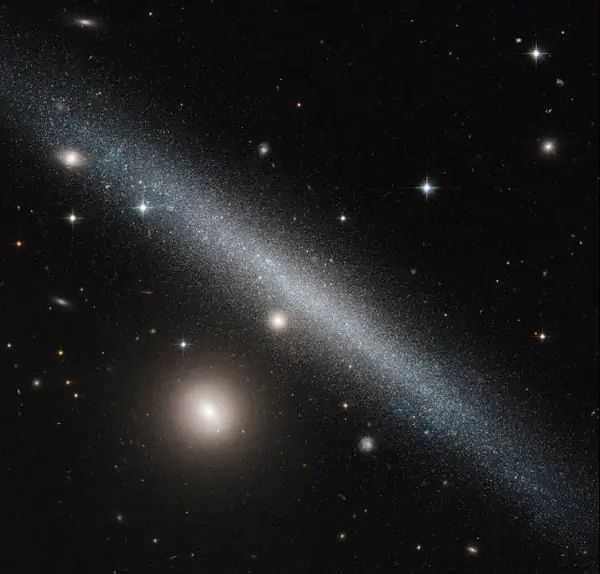
Galaxies, similar to stars, are seldom alone; more frequently they are seen as duos, small collections, and even clusters, in which numerous galaxies come together.
Our Galaxy, along with the well-known Andromeda and Triangle galaxies and the faint dwarf galaxies situated nearby, constitutes the Local System, which includes approximately 40 entities (Fig. 6.19). All of them are held together by gravitational forces and are not far apart from each other.
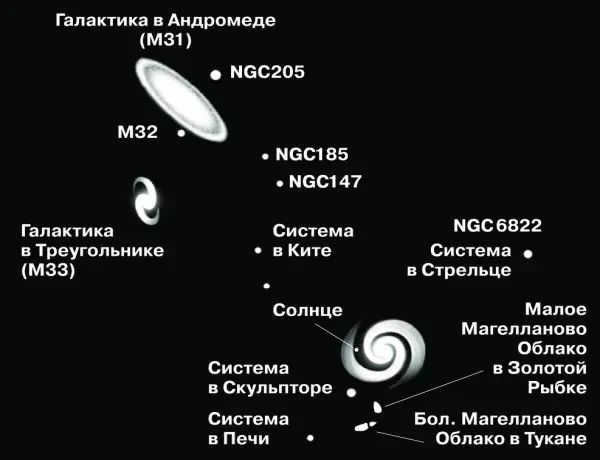
Clusters of galaxies can be classified into two main types: regular and irregular. Regular galaxy clusters have similar properties to globular star clusters, with a spherical symmetry and a high concentration of galaxies towards the center. In the constellation Veronica’s Hair, there is a typical regular cluster with a size of approximately 4 Mpc, containing tens of thousands of galaxies (Fig. 6.20).
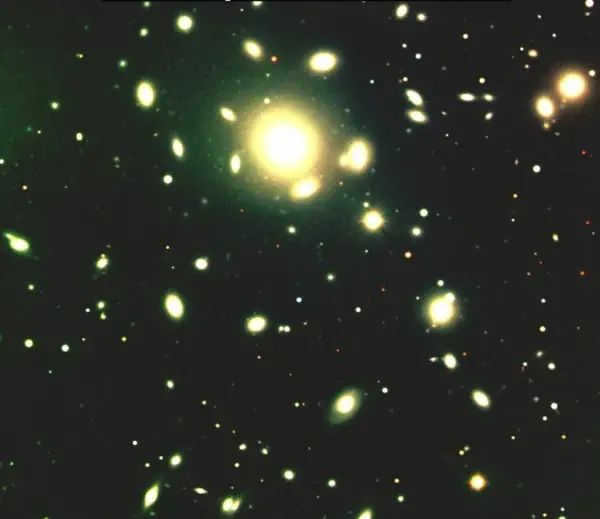
The density of galaxies in clusters can reach such levels that they are situated in close proximity to one another. This close proximity leads to a notable alteration in the morphology of galaxies due to their gravitational interaction. One commonly observed phenomenon is the presence of connecting bridges, composed of stars or gas, as well as elongated “tails” that extend over great distances (Fig. 6.21). B. A. Vorontsov-Vel’yaminov was the pioneer in studying these types of galaxies, which were subsequently referred to as interacting galaxies.
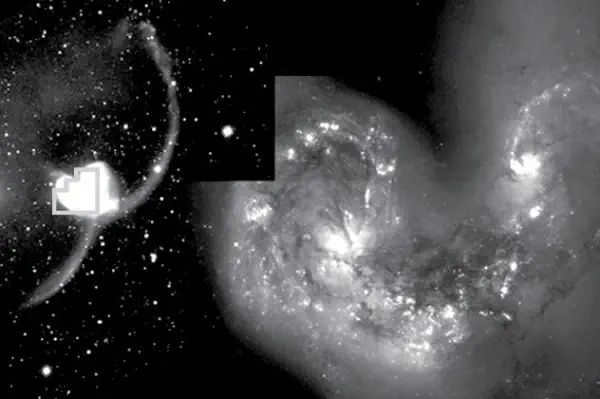
As per contemporary theories, the formation of all major galaxies was not instantaneous but rather occurred gradually through the accumulation of smaller celestial bodies. These smaller objects can be classified into two categories: large mergers, which involve galaxies of similar mass, and small mergers, where the mass difference between the galaxies is several times or more. For instance, it is hypothesized that the galaxy NGC 5128 formed as a result of the merger between an elliptical and a spiral galaxy. Radio observations have provided evidence of interaction between our galaxy and its closest neighbors, specifically the occurrence of a gas stream originating from the Magellanic Clouds. It is plausible that in a few billion years, the stars within these galaxies will merge with those of the Milky Way.
Active nuclei are commonly observed in interacting galaxies and galaxies with close companions. The central part of any galaxy, known as its nucleus, always stands out due to its brightness. A small fraction of galaxies (approximately 1%) have particularly bright nuclei, where an enormous amount of energy is released. The activity of these nuclei can be observed in various ways. Firstly, they exhibit a very high level of radiation (luminosity) not only in the optical spectrum, but also in the X-ray or infrared ranges. The luminosity of these nuclei is comparable to that of our own Milky Way galaxy. The radiation originates from a region with a diameter of about 1 pc and can vary significantly within a matter of months or even days. Secondly, gas within the nucleus moves at velocities of thousands of kilometers per second, resulting in the formation of long emissions known as jets (Figure 6.22).
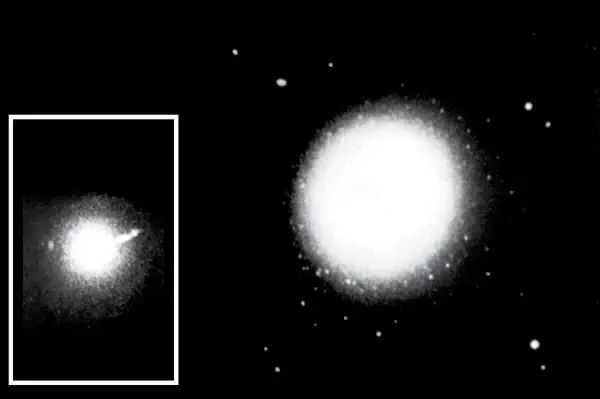
Furthermore, synchrotron radio emission is generated by powerful streams of high-energy electrons and protons emanating from the nucleus in two opposing directions.
Galaxies that emit high-power radio waves from their active nuclei are referred to as radio galaxies.
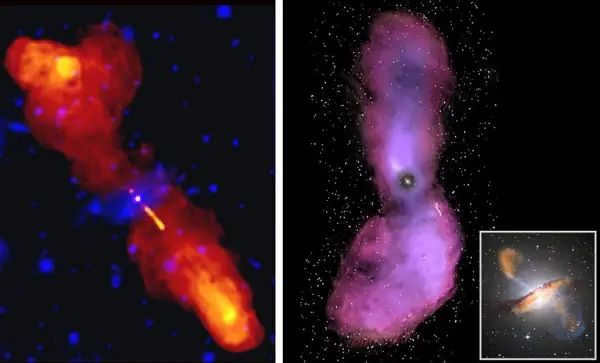
The radio emission from them can be thousands of times stronger than the radio emission from our Galaxy or similar ones. It is notable that the most powerful radio emission comes from regions that are symmetrically located on both sides of the galaxy and are much larger than the galaxy itself (Fig. 6.23).

Quasars, abbreviated from their full name “quasi-stellar radio sources”, have been discovered through radio astronomical observations. These quasars are the most powerful sources of visible and infrared radiation in the Universe. Interestingly, in photographs, quasars appear similar to stars, with the brightest ones resembling a 13th magnitude star.
Nevertheless, the spectra of quasars exhibit bright emission lines that bear a striking resemblance to the spectra of gas nebulae. These emission lines, however, are notably shifted towards the red side of the spectrum, similar to the spectra of distant galaxies. Surprisingly, even the closest quasars are positioned farther than the majority of known galaxies, with distances of approximately 1 billion light years. The most remote quasars have been detected at distances of up to 13 billion light years. The reason for their detectability at such immense distances lies in their extraordinary luminosity, which surpasses that of our own Milky Way galaxy by several hundred times. Currently, the scientific community has identified thousands of quasars.
Quasars exhibit a range of phenomena, including changes in brightness and the ejection of matter jets, as illustrated in Figure 6.24.
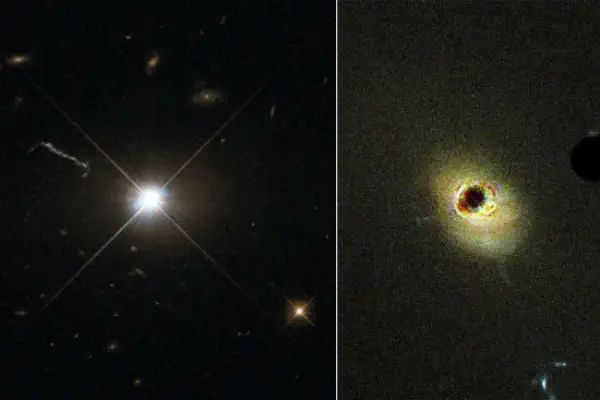
Luminescence has been detected around quasars, which are located relatively close by. The presence of stars can explain the composition and structure of this luminescence. It is likely that quasars are highly active nuclei of galaxies located far away.
By studying the most distant objects, we are able to peer into the past. When we observe a galaxy (or quasar) that is, for example, 3 billion light-years away, we are actually seeing it as it was 3 billion years ago, not its current state. The fact that we do not see quasars near our own Galaxy suggests that galactic nuclei were more active in the distant past.
The answer to the question regarding the origins of heightened activity in galactic nuclei is currently unknown. One potential explanation, which accounts for the observed array of phenomena, posits the existence of black holes with masses ranging from tens to hundreds of millions of times that of the sun at the nuclei. When matter falls into a black hole, an immense amount of energy is released and converted into electromagnetic radiation. Supporting this hypothesis is the detection of substantial masses of non-luminous matter in the nuclei of several galaxies, as observed by ground-based telescopes and the Hubble Space Telescope.
These telescopes enable us to capture images that reveal the presence of countless galaxies. An interesting observation is the distinctive honeycomb-like structure (Fig. 6.25) that characterizes their spatial distribution.
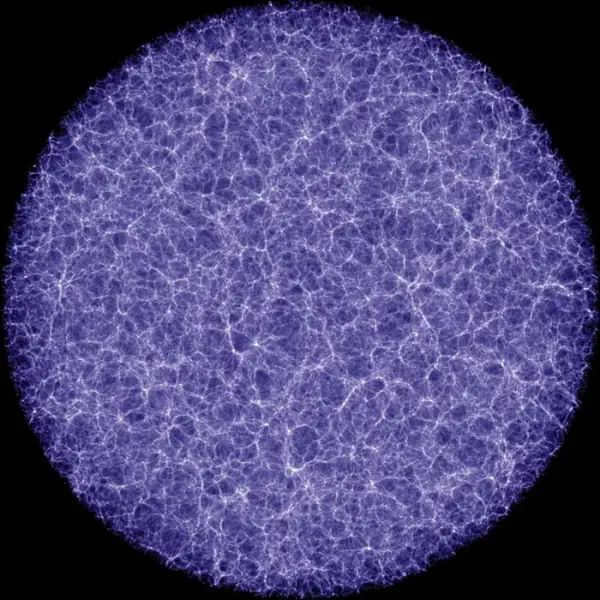
Clusters and superclusters of galaxies are positioned in a manner that they do not occupy the entire expanse, but rather create distinct “walls” that act as boundaries between immense voids where galaxies are scarce. These voids possess a size of approximately 100 Mpc, while the walls themselves are only 3-4 Mpc thick. This intricate arrangement has developed as a consequence of the extensive evolution of all observable entities in the Universe, with cosmology delving into their overarching characteristics.
Queries
1. What methods are used to determine distances to galaxies?
2. How can galaxies be classified based on their appearance and shape?
3. What are the differences in composition and structure between spiral and elliptical galaxies?
4. What is the cause of the “red shift” observed in the spectra of galaxies?
5. What are some known extragalactic sources of radio emission?
6. What is the origin of radio emission in radio galaxies?
Exercise 21
1. The size of a galaxy located 150 Mpc away can be compared to the size of our own Galaxy by considering its apparent angular diameter of 21″.
2. To determine the distance to the galaxy, we can use the apparent stellar magnitude (+18) and the absolute stellar magnitude (-7) of a new star found within it.
3. The rate of removal of a galaxy that is 300 Mpc away from us can be calculated.
4. By knowing the removal velocity of the galaxy (2 ∙ 10 4 km/s), we can determine at what distance it is located.
5. If an observer is located in galaxy M31 (Andromeda Nebula) at a distance of 600 kpc, the angular diameter at which our Galaxy (with a diameter of 30,000 pc) would be visible can be calculated.

There is a wide range of characteristics that distinguish galaxies from each other, including spherical elliptical galaxies, disk spiral galaxies, galaxies with a lintel (bar), lenticular galaxies, dwarf galaxies, irregular galaxies, and more.
Elliptical galaxies (E) – these galaxies do not have a disk component, or it is only weakly pronounced. All other galaxies are classified as disk galaxies.
Spiral galaxies (S) – these galaxies have spiral arms. In some cases, these arms can transform into rings.
Lenticular galaxies (S0) – the structure of these galaxies is similar to spiral galaxies, except for the absence of a distinct spiral pattern. This is because of the low amount of interstellar gas, which leads to a low rate of star formation.
Irregular galaxies (Irr) – these galaxies have an irregular and wispy structure. They typically contain a significant amount of interstellar gas, up to 50% of the galaxy’s mass.

Among them are some of the most incredible creatures of nature, cosmic “wonders of the world” – spiral galaxies, represented by the nebula in the constellation Andromeda, which can actually be observed with the naked eye under favorable conditions – appearing as a small, blurry, glowing spot.
A galaxy consists of a disk, a halo, and a corona. There is speculation about the existence of a massive black hole at the center of the galaxy. The annular region of the galactic disk (3-7 kpc) contains a concentration of almost all the molecular matter of the interstellar medium.
The core – The central area of the galaxy is referred to as the core. It is a dense region with a high concentration of stars, with thousands of stars present in each cubic parsec.
The outer region – Surrounding the core is a spherical space known as the outer region, which contains stars. The central part of this outer region is called the balge.
The stellar disk – Resembling two plates stacked together, the stellar disk is a massive structure with a higher density of stars compared to the outer region. The stars within the disk move in circular paths around the galaxy’s center.
The corona – Enveloping the disk and the outer region is the corona, a shell of hot gas.
Only three galaxies are visible to the naked eye: the Andromeda Nebula, the Large Magellanic Cloud (LMC), and the Small Magellanic Cloud (SMC).
The shape of our galaxy, the Milky Way, resembles that of a spiral. In the Southern Hemisphere, there are other galaxies that can be observed without the need for visual aids, namely the Large and Small Magellanic Clouds. These galaxies turned out to be the nearest “stellar continents” to us.
Elliptical galaxies are quite prevalent, but the ones that attract significant research interest are those that are connected by bridges. Additionally, there are small dwarf galaxies. The stars visible in the night sky are the closest to our solar system. The bright band known as the Milky Way, which can be seen on a dark and clear night, represents the visible edge of our galaxy. It is just one of the hundreds of billions of stars that constitute the Milky Way. Moreover, the Milky Way is just one of billions of galaxies scattered throughout the vast expanse of the universe.
The closest galaxies take hundreds of years for their light to reach us. On the other hand, the farthest galaxies discovered thus far are billions of years away from our planet. Scientists employ a unique unit of measurement, known as the light year, to quantify distances in outer space. A light year represents the distance that light travels in one year, amounting to ten million million million kilometers, or ten trillion kilometers.

The Galaxy known as the Milky Way
The Milky Way Galaxy is a vast, flat disk that spans approximately 120,000 light years. It has a central bulge and its stars are arranged in a beautiful spiral pattern, resembling a giant arm twisted into a cosmic spiral. The exact number of stars in the Milky Way has yet to be determined, but it is estimated to be over 100 billion. Within the coils of this immense spiral, new stars are constantly being born, surrounded by dust and gas.
The galaxy’s disk rotates as a whole, much like a spinning saucer. However, each individual star within the galaxy rotates at a different angular velocity. This discovery was made by the renowned Dutch astronomer Jan Hendrik Oort in 1925. Oort also determined the location of the galaxy’s center, which lies in the direction of the constellation Sagittarius.
Our Sun, situated in a region of the spiral known as the Orion branch, is approximately 30,000 light years away from the center of the Milky Way. By studying the relative motion of stars, Oort discovered that the Sun orbits the galaxy’s center in a nearly circular path, traveling at a speed of 220 km/sec. Modern measurements have revised this value to approximately 250 km/sec.
Like a living organism, our galaxy exhibits a form of cosmic metabolism. Its various components and objects interact continuously, creating a complex network of relationships. Many scientists believe that our galaxy is relatively young when compared to others in the universe.
Black holes
Scientists have recently made a groundbreaking discovery – there is a colossal Black Hole lurking in the heart of our galaxy.
A black hole is an enigmatic celestial entity with an immense density that materializes following the cataclysmic explosion of massive stars. Its gravitational pull is so overwhelming that not even light can escape its clutches. However, black holes can be detected by the emission of X-rays generated from the matter they devour. If we observe stars circling around a potent yet invisible source of X-rays, it is a strong indication of the presence of a black hole.

According to a particular hypothesis, during the early stages of the universe, supermassive black holes initiated the attraction of cosmic dust, resulting in the emission of gases due to the immense speed of this process. Consequently, the formation of stars commenced. Once the substance within the gravitational influence ceased, the luminescence subsided, and the black hole entered a dormant state until a cosmic catastrophe rekindled the process. This is why certain galaxies exhibit a brilliant radiance at their core.
Galaxy clusters
What is happening in our galactic neighborhood? Not too long ago, scientists had the belief that galaxies were uniformly spread out in the vast expanse of the universe, forming a homogeneous mass. However, this turned out to be incorrect! It has now been discovered that galaxies actually cluster together, creating voids in between. These clusters are not formed by individual galaxies, but rather by their groups.
Indeed, the entire universe (refer to Structure of the Universe) is made up of these superclusters. This revelation is one of the major accomplishments of theoretical cosmology, observational astronomy, and practical astrophysics at the end of the 20th century. The largest of these superclusters resemble long strands or spherical shells, consisting of hundreds or even thousands of galaxies.
The largest cluster discovered so far spans over 1 billion light-years. This elongated galactic strand was found in the Perseus and Pegasus constellations. The cosmic voids are equally vast, with measured distances between strands reaching up to 300 million light-years. Cosmologists have likened the structure of the universe to a giant sponge.
Intensive research on galaxies, including the use of radio telescopes, the discovery of background radiation, and the identification of new cosmic entities like quasars, which emit energy tens of times more powerful than the most energetic galaxies, has brought forth new mysteries in the study of the universe.

The Beginning of the Universe
Astronomers have discovered that the distances between galaxies are continuously increasing, indicating that the Universe is expanding. Based on this observation, it is widely believed that the Universe originated from a cosmic event known as the Big Bang, which led to the creation of stars, planets, and galaxies (see Interesting Facts about Stars).
While some scientists argue that the Universe could expand infinitely, others propose that the expansion will eventually slow down and potentially come to a halt. In such a scenario, the Universe would start to contract, leading to a reverse of the Big Bang – a massive contraction.
Interestingly enough, the elements that constitute the rest of the Universe – hydrogen (73%), helium (25%), and other elements (2%) – are also the building blocks of stars. Apart from a few distinctions, stars possess the same materials in their composition. According to the theory of the big bang, approximately 13.7 billion years ago, the Universe existed as a compact sphere with unimaginably high temperatures (exceedingly hot). In simpler terms, the entire cosmos resembled an enormous stellar entity.
The Birth of a Star
The moment of birth for a star was characterized by an intensely hot and dense sphere, comparable to a nuclear powerhouse. Over a relatively short period of time on a cosmic scale, hydrogen underwent a nuclear fusion reaction, transforming into helium. As the universe continued to expand and cool, hydrogen and helium began to cool and coalesce due to their mutual attraction. It is at this point that a star is born. The composition of each star typically consists of 73% hydrogen and 25% helium.
With knowledge of what stars are composed of, scientists have delved even deeper into the study of the universe. The initial stars that formed were likely massive in size and eventually exploded. However, through their life cycles and subsequent deaths, they produced certain heavy elements that are present on Earth today, such as carbon, oxygen, uranium, and gold.
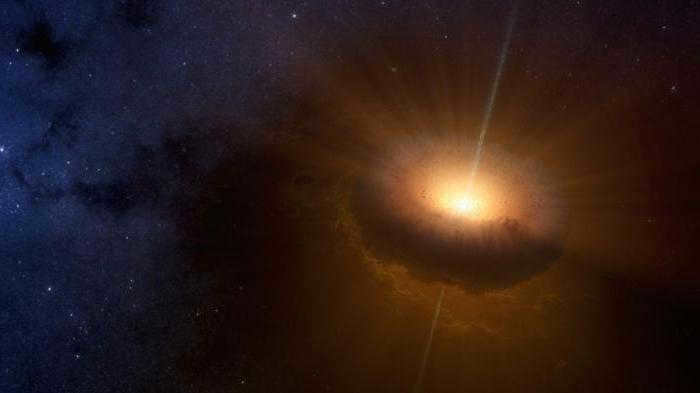
What Makes Up a Galaxy
It is common knowledge that the universe consists of numerous galaxies. When gazing at the night sky, one can’t help but ponder what composes stars and how they come into existence. It is evident that stars have been forming since the inception of the Universe itself. However, are new stars continuously being born, and is it accurate to say that stars eventually perish?
Astronomers have determined that the Milky Way, our galaxy, is the birthplace of five fresh stars every year. These stars can be classified as either metal-rich or metal-poor. The metal-rich stars contain a greater abundance of heavy elements that were created by earlier stars, whereas the metal-poor stars have a lower concentration of these elements. It piques my curiosity to know what substances, aside from helium and hydrogen, comprise the composition of stars. Which other elements contribute to their makeup? And what sets them apart from one another?
The elemental components
Interestingly enough, the proportion of components always remains relatively consistent. Take, for instance, the Sun, which is abundant in metals. It contains a higher quantity of heavy elements compared to other stars. However, its composition is comprised of approximately 71% hydrogen, 27.1% helium, and the remaining portion consisting of nitrogen, oxygen, and carbon. Over the course of 4.5 billion years, hydrogen has been converting into helium within the solar core.
What other elements comprise stars aside from hydrogen and helium? Do all celestial luminaries possess the same combination of elements? Is their composition identical to that of the Sun or does it differ?
According to Vernadsky V. I., stars are considered as the focal point of maximum energy and matter condensation in the Galaxy. Nowadays, stars are no longer referred to as a gas cluster, but rather as extremely dense celestial objects with a massive weight. It is believed that stars have a heterogeneous structure, sharing similar chemical elements but in varying proportions.
There are even theories proposing that ball lightning serves as an analog to stars. Ball lightning consists of a nucleus at its core, surrounded by a plasma shell, with the boundary being an air layer. Ball lightning emits various colors and has different radii, while also exhibiting rotation and weighing between eight to ten kilograms.
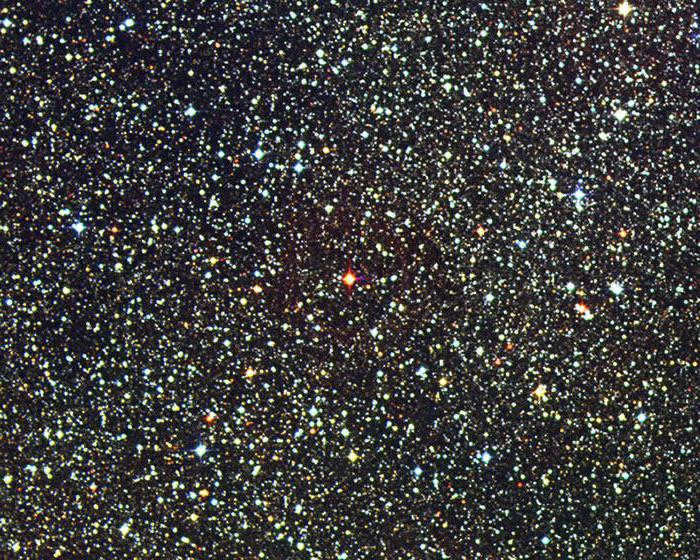
Size and Dimensions of Stars
We have already discussed the composition of stars in the sky, but what accounts for their varying sizes? If we were to represent the Sun as a sphere with a diameter of ten centimeters, the entire solar system could be portrayed as a circle with a diameter of eight hundred meters. In this scale, the closest star to the Sun, Proxima Centauri, would be located 2,700 kilometers away, while Sirius would be 5,500 kilometers, Altair at 9,700 kilometers, and Vega at 17,000 kilometers. Arcturus would be situated 23,000 kilometers from our primary star, Capella at 28,000 kilometers, Regulus at 53,000 kilometers, and Deneb at a staggering distance of 350,000 kilometers.
The size of stars varies from one another. The volume of the Sun is significantly smaller compared to Sirius, Altair, Procyon, Betelgeuse, and Epsilon of Ascendant. However, it is much larger than Proxima Centauri and several other stars. Within our galaxy, one of the largest stars is the red supergiant located at the center. It exceeds the size of Saturn’s orbit and is known as the Cepheus garnet star.
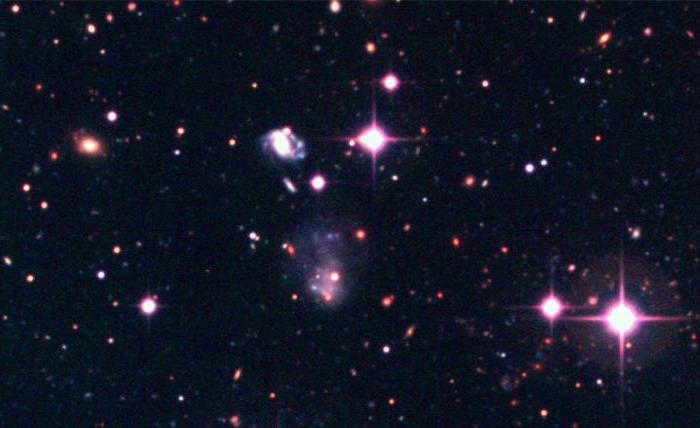
During ancient times, individuals who observed the stars noticed that they congregate into peculiar formations resembling various figures. Subsequently, they assigned corresponding names to these formations.
Orion – The Celestial Hunter
Let’s take a look at the magnificent constellation Orion. This constellation is named after the legendary hunter from ancient Greek mythology. Orion’s belt, consisting of three stars, is a notable feature of this constellation. Known for its size and visibility, Orion is one of the most famous constellations in the night sky. Its large stars can be seen in both the Northern and Southern Hemispheres, thanks to its position on the celestial equator. In the Northern Hemisphere, Orion is visible in the evening from October to early January, while in the Southern Hemisphere, it can be seen in the morning from late July to November. Orion serves as a helpful guide for stargazers in their quest to explore other stars.
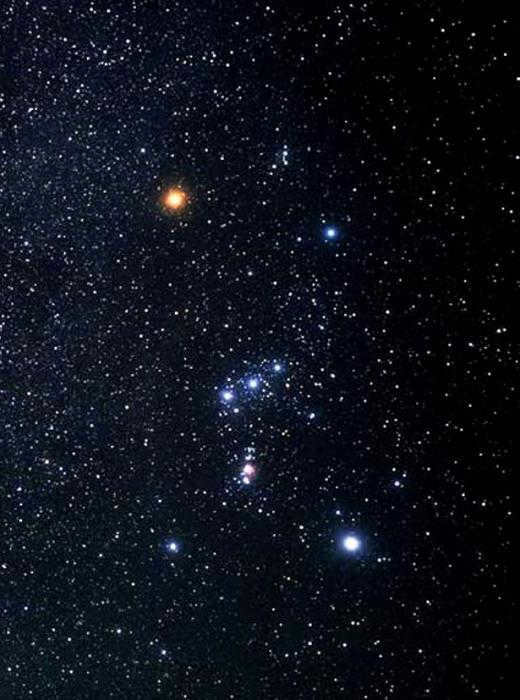
Orion’s alpha is Betelgeuse. It is a red star and is larger than the orbit of Mars. However, Betelgeuse is slightly less bright than beta Rigel. Beta Rigel is a massive blue-white star and is one of the most brilliant in the night sky. The belt of stars in Orion, namely Mintaka, Alnitak, and Alnilam, which correspond to delta, zeta, and epsilon respectively, is especially stunning. These three luminous stars are positioned close to each other, making it easy to distinguish Orion from other constellations.
What stars form the Big Dipper constellation and how did it come into being?
The constellation Ursa Major has been known since ancient times. According to Greek mythology, it represents the nymph Callisto, who was a companion of Artemis and the lover of Zeus. Callisto broke the rules of Artemis’ companions and was transformed into a bear as punishment. Artemis then set dogs on her, but Zeus saved Callisto by taking her to heaven. Some versions of the story suggest that Zeus himself transformed Callisto into a bear to hide her infidelity from his jealous wife. It is also possible that Hera, seeking revenge for the affair, turned Callisto into a constellation. Callisto’s son, Arcas, accidentally organized a hunt for the bear. There are other tales about Ursa Major, including one about the infant Zeus hiding from Kronos with the help of nurse bears. Regardless of the various stories, we can still admire the beauty and mystery of the Big Dipper.
I am curious about the composition of the Big Dipper and its observable location. This constellation is easily visible in regions with moderate latitudes. It can be observed during the night, even when the sun has set. In the night sky, you can spot seven prominent stars that form the shape of a dipper with a handle. These stars are quite conspicuous and can be easily distinguished from others. They are classified as second-magnitude stars. However, it is worth noting that the upper left star of the bucket, in particular, is slightly fainter than the rest.
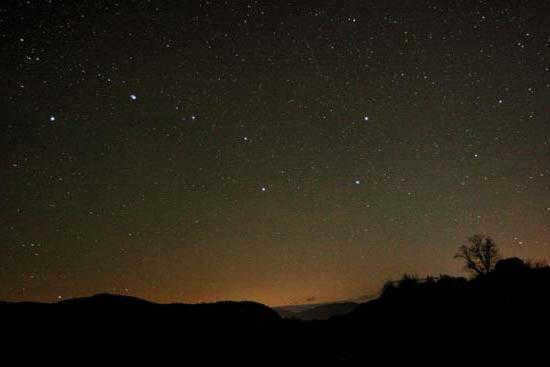
Two celestial bodies
Aside from these seven, there exist 125 other celestial bodies that shine brighter than the sixth magnitude. This particular constellation is among the largest in size. Its boundaries stretch far beyond the confines of the so-called bucket, which contains stars located at varying distances from us, beginning at a mere 50 light years away (the closest of which is the star Aliot).
Among the constellations that are known, there are also those that are relatively small in terms of the number of stars they contain. In the field of astronomy, a common question is: which constellation consists of just two stars and where can it be found in the night sky? The answer to this question is the epsilon system of Ascendant. This constellation is made up of two stars, one of which is visible and the other is invisible. The visible star appears as a large, yellowish supergiant within the Ascendant constellation. It has a surface temperature of 6600 K and is 36 times more massive than the Sun. Its diameter is 190 times that of the Sun. However, even this star’s size is overshadowed by the second star in the system, which has a diameter 2700 times that of the Sun. The orbits of all the planets in our solar system, including Saturn, could fit inside this star. Despite its immense size, the luminosity of this giant star is relatively small, similar to that of the Sun. This star is also very cold, with a surface temperature of 1600 K.
Neutron stars
The existence of stars that are significantly smaller than the Sun has been confirmed relatively recently. The discovery of pulsars in 1967 provided evidence for the reality of these objects, which were later identified as fast-rotating stars known as neutron stars. The prediction of their existence was made by theoretical physicists in the 1930s, with Lev Landau being one of the first to propose the idea. So what makes these celestial bodies unique, what are they made of, and how are they formed?
Based on the study of celestial bodies, it was initially believed that neutron stars would have a size of about 10 km. The density of matter at the core of these stars is incredibly high, comparable to that of an atomic nucleus: 2.8 x 1014 grams/cm³. It was theorized in 1934 that neutron stars are composed of degenerate neutrons and are formed during the explosion of a supernova star.
Subsequently, the confirmation of this assumption came with the detection of pulsars. The emergence of pulsars is a magnificent astronomical occurrence accompanied by the brilliant spectacle of a supernova detonating star. These radiant bursts happen approximately once every 25 years. It appears that within the span of 15 billion years (the duration of the galaxy’s existence), over a hundred neutron stars ought to have been created!
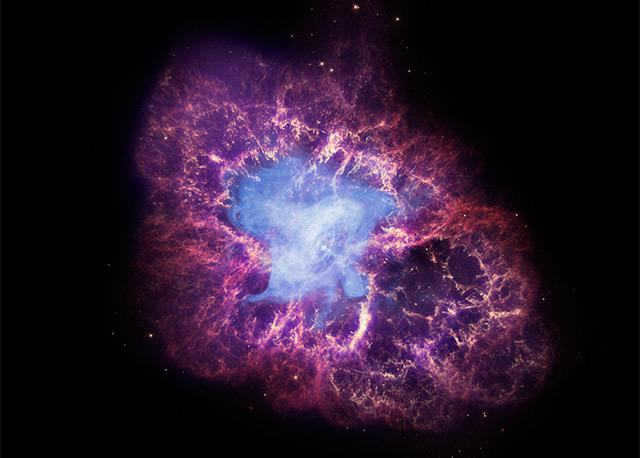
Pulsars
Pulsars have the primary role of generating strong electric fields that pull charged particles from the star and propel them to extreme energy levels. This process occurs through the star’s rotation and the presence of a magnetic field. The accelerated particles emit electromagnetic radiation, primarily in the form of radio waves, due to complex electrodynamic processes. Although only a small portion of the energy is converted into observable radio waves, the particles that are torn away from the neutron star and accelerated cause a decrease in its rotational energy. Consequently, the rotation period of the pulsars increases, and the neutron star gradually decelerates as a result of its own radiation!
